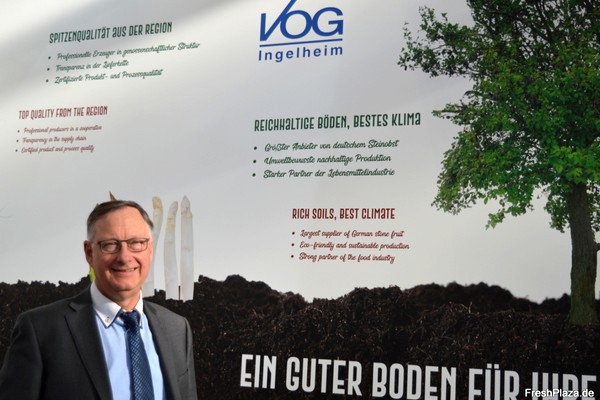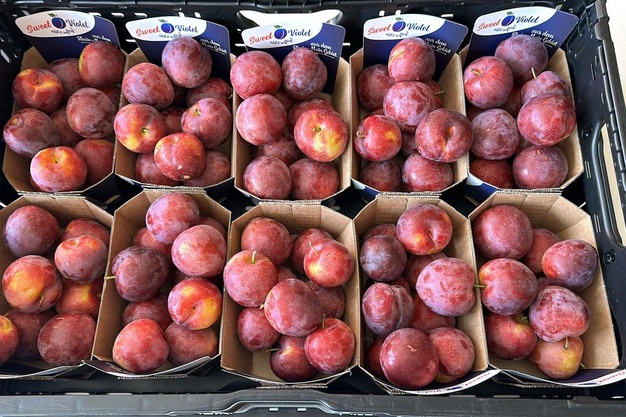In mid-June - around eight days earlier than usual - the first plums of the Ruth Gerstetter variety were harvested in Rheinhessen. "In terms of marketing, the start of the season was very difficult, as consumers still had plenty of summer fruit - such as berries and stone fruit - available. Accordingly, demand at the start of the season was rather subdued," says Jürgen Hattemer, Sales Manager at Vereinigte Großmärkte für Obst + Gemüse Rheinhessen eG in Ingelheim.
Additionally, the German produce hit the market almost simultaneously this year. Hattemer: "The usual offset between the individual growing regions, such as the Lake Constance region, Rheinhessen and the Altes Land, does not exist this year. Yields varied from region to region: we had some frost-related losses, while South Baden and the Lake Constance region were largely spared weather damage. In general, however, it can be said that it is a challenging plum year in terms of quality. Although the fruit is quite thick, the consistency and compressive strength is not always there. Even now, there are still periods of heavy rain: Accordingly, in certain areas we will also have to stop by the end of the month. We will supplement the German plum season, which is coming to an end early, with foreign produce from Eastern Europe."

Jürgen Hattemer at the Fruit Logistica 2023.
Lack of continuity in sales
Although food retailers have been running weekly plum promotions since the start of the marketing season, there has been a lack of continuity in sales so far, according to Hattemer. "The shops are stocked accordingly at the weekend, at the start of the promotion week, but no goods are reordered during the week. This indicates weaker sales. However, we see a higher demand for plums towards autumn compared to the height of summer. Accordingly, we assume that demand will pick up slightly towards the end of the season." The current price level is around 10-15 per cent below the previous year's level, with production costs rising again.
In addition to plums, late summer at VOG is also characterised by mirabelle plums. "The harvest is now drawing to a close, and we are quite satisfied with this year's yields overall. The total harvest volume is around 20 per cent larger than last year. What we are struggling with this year, however, is the lack of demand in the industry, which in turn is due to the existing stocks from last year's harvest. However, the fresh market is also proving difficult, as the same quality problems that affect plums also apply to mirabelles." Prices are roughly at the same level as last year, Hattemer continues. Over the years, Mirabelle plums have established themselves as a stable seasonal product. Recently, both the cultivation volume and consumption have remained fairly constant. "It is a smaller product with a short marketing window. Nevertheless, we bring a total of between 1,200 and 1,500 tonnes to market every year."

Regionally produced plums are currently available at selected Aldi shops.
Pilot project with regional plums
VOG has been acting as a central marketing organisation for its members for many years and markets the fruit crops produced by the cooperative, primarily plums, mirabelle plums, cherries and apples. Hattemer reveals that three member farms have recently started growing Sweet Violet plums. "This is a pilot project with smaller quantities, which are currently listed in selected Aldi shops for around three weeks. In contrast to the plums, plums from southern European cultivation have predominantly been available in German food retailers to date. Our aim with Sweet Violet is to offer consumers a great alternative from regional cultivation."
For more information:
Jürgen Hattemer
Vereinigte Großmärkte für Obst + Gemüse Rheinhessen eG
Am Großmarkt 1
55218 Ingelheim
Tel.: +49 (0) 61 32 7 84-0
Email: hattemer@vog.de
www.vog.de
